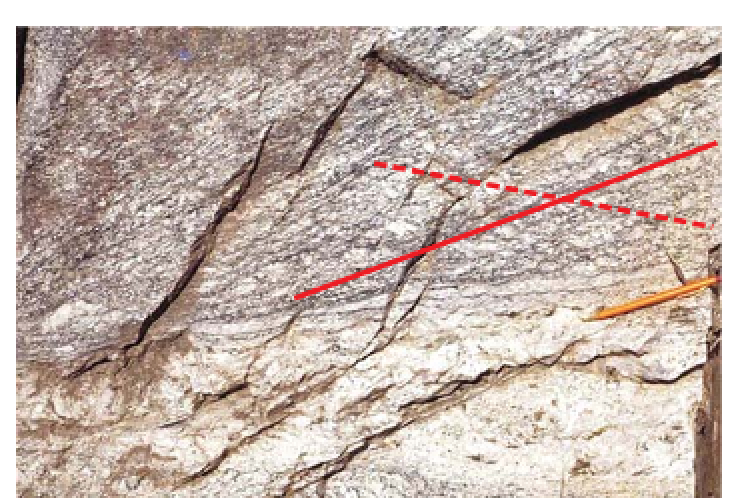Geology Reference
In-Depth Information
s
c
Figure 7.10
Deformed granite showing general orientation of a planar S-C fab-
ric. Shear sense is clockwise (dextral). Shear strain is often amplified in deformed
plutons at lithological boundaries, in this case a deformed pegmatite vein.
planes can reveal information about the degree of strain and also the sense of
shear (dextral or sinistral) that caused the deformation (Figure 7.10). Detailed
mapping of S-C fabrics as kinematics indicators and markers of strain intensity
are very helpful in developing models of magma emplacement. At higher
pressure-temperature conditions, metamorphic fabrics are more diffuse and
the fabric may be difficult to interpret in terms of purely magmatic or purely
metamorphic conditions. Under the highest pressure-temperature metamorphic
conditions, plutonic rocks can partially melt and recrystallise as metamorphic
rocks, such as gneisses.
It is important that a distinction between fabrics formed in the magmatic
state (pre-full crystallisation fabrics) and those when the magma has solidified
(crystal plastic strain fabrics) is made in the field. Diagnostic features of both are
summarised in Figure 7.11. Measurement of both fabric types should be carried
out just as you would when encountering fabric orientations in any deformed
rock type, that is record carefully the dip and strike of the foliation and dip
and plunge of any lineation or alignment of enclaves (see also structural guide
McClay, 1991).
Finally, prolonged deformation in plutonic rocks can lead to development of a
range of structures common in tectonically deformed rocks that overprint earlier
magmatic fabrics. Thus,
shear zones, mylonites
and
cataclasites
are observed in



















